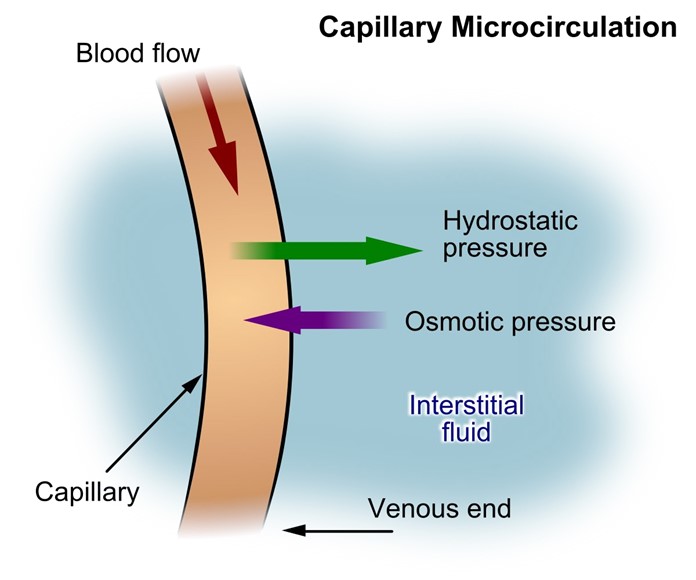A nurse in an emergency department is caring for a client who has diabetic ketoacidosis (DKA) and a blood glucose level of 925 mg/dL. The nurse should anticipate which of the following prescriptions from the provider?
Oral hypoglycemic medications
0.9% sodium chloride IV bolus
Dextrose 5% in 0.45% sodium chloride
Glucocorticoid medications
The Correct Answer is B
Choice A Reason: This choice is incorrect because oral hypoglycemic medications are not effective for treating DKA. Oral hypoglycemic medications are drugs that lower the blood glucose level by stimulating insulin secretion or increasing insulin sensitivity. They may be used for clients who have type 2 diabetes mellitus, but they do not work for clients who have type 1 diabetes mellitus or DKA.
Choice B Reason: This choice is correct because 0.9% sodium chloride IV bolus is an effective treatment for DKA. 0.9% sodium chloride is an isotonic solution that contains the same concentration of solutes as blood plasma. It may be used for clients who have fluid loss, dehydration, or shock. In DKA, the body breaks down fat for energy due to insulin deficiency or resistance, resulting in high levels of ketones and acids in the blood. This causes osmotic diuresis, dehydration, electrolyte imbalance, and metabolic acidosis. Therefore, administering 0.9% sodium chloride IV bolus can help to restore fluid volume and correct electrolyte imbalance.
Choice C Reason: This choice is incorrect because dextrose 5% in 0.45% sodium chloride is not indicated for treating DKA. Dextrose 5% in 0.45% sodium chloride is a hypertonic solution that contains more solutes than blood plasma. It may be used for clients who have hyponatremia, cerebral edema, or malnutrition, but it can worsen hyperglycemia and osmotic diuresis in clients who have DKA.
Choice D Reason: This choice is incorrect because glucocorticoid medications are not indicated for treating DKA. Glucocorticoid medications are drugs that mimic the effects of cortisol, a hormone that regulates stress response and inflammation. They may be used for clients who have allergic reactions, asthma, or autoimmune diseases, but they can increase blood glucose levels and inhibit insulin action in clients who have DKA.

Nursing Test Bank
Naxlex Comprehensive Predictor Exams
Related Questions
Correct Answer is C
Explanation
Choice A Reason: This is incorrect because fluid overload is a condition of excess fluid volume in the body. A client who has fluid overload is more likely to have a high CVP, which indicates increased pressure in the right atrium and vena cava.
Choice B Reason: This is incorrect because an intracardiac shunt is a condition of abnormal blood flow between the chambers of the heart. A client who has an intracardiac shunt may have a normal or high CVP, depending on the direction and magnitude of the shunt.
Choice C Reason: This is correct because hypovolemia is a condition of low fluid volume in the body. A client who has hypovolemia is more likely to have a low CVP, which indicates decreased pressure in the right atrium and vena cava.
Choice D Reason: This is incorrect because left ventricular failure is a condition of impaired pumping function of the left ventricle. A client who has left ventricular failure may have a normal or high CVP, depending on the degree of backward failure and pulmonary congestion.

Correct Answer is A
Explanation
Choice A Reason: This is correct because respiratory acidosis is characterized by a low pH and a high PaCO2, indicating that the client has impaired ventilation and excess carbon dioxide in the blood.
Choice B Reason: This is incorrect because respiratory alkalosis is characterized by a high pH and a low PaCO2, indicating that the client has increased ventilation and reduced carbon dioxide in the blood.
Choice C Reason: This is incorrect because metabolic acidosis is characterized by a low pH and a low HCO3, indicating that the client has an excess of metabolic acids or a loss of base in the blood.
Choice D Reason: This is incorrect because metabolic alkalosis is characterized by a high pH and a high HCO3, indicating that the client has an excess of base or a loss of metabolic acids in the blood.
Whether you are a student looking to ace your exams or a practicing nurse seeking to enhance your expertise , our nursing education contents will empower you with the confidence and competence to make a difference in the lives of patients and become a respected leader in the healthcare field.
Visit Naxlex, invest in your future and unlock endless possibilities with our unparalleled nursing education contents today
Report Wrong Answer on the Current Question
Do you disagree with the answer? If yes, what is your expected answer? Explain.
Kindly be descriptive with the issue you are facing.
